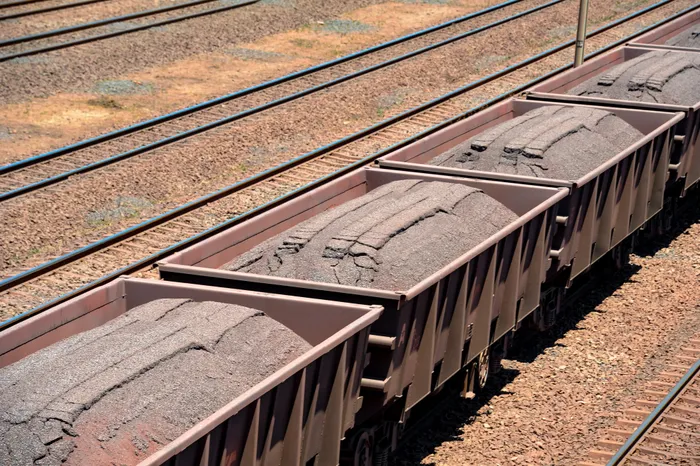Kumba Iron Ore reports steady production and sales growth on improved rail conditions
MINING

Kumba Iron Ore said Transnet's performance at Saldanha Bay Port reflects better equipment availability relative to the comparative 2024 period, and as a result its sales increased by 8% in the second quarter to June 30, 2025. South Africa is one of the largest producers of iron ore in Africa. Picture Henk Kruger/Independent Newspapers
Image: Henk Kruger/Independent Newspapers
Kumba Iron Ore’s operational performance continues to improve, and it has made progress on the ultra-high-dense-media separation (UHDMS) project to increase the premium proportion of production and enhance margins.
This was according to Kumba’s CE Mpumi Zikalala, who said in a production report and trading statement for the six months to June 30 that total production was flat at 18.2 million tons (Mt), and there was an increase in sales on the back of improved logistics stability.
“As a result, we have maintained our full-year 2025 guidance at 35 – 37 Mt for both production and sales,” she said.
Headline earnings for the half-year were likely to be between R6.84 billion and R7.34bn, varying by between 4% and 3% from the previous six months ended June 30, 2024. Headline earnings a share were likely to be between R21.33 and R22.89, varying between 4% and 3% from the comparative period's R22.27.
The earnings for the period were largely attributable to a lower average realised free-on-board export iron ore price and a strong currency, partly offset by cost optimisation initiatives.
Better cost management helped to offset inflation-related costs, and the group was on track to reach unit cost guidance of $39/ton for the full financial year and capital expenditure guidance of R9.5bn – 10.5bn.
"Iron ore markets were characterised by weak global steel demand due to trade tariff-related uncertainty, while lower iron ore supply from Australia and other non-traditional producers was partly offset by an increase in supply from Brazil,” said Zikalala.
She said amidst this challenging market environment, Kumba achieved an average realised free-on-board (FOB) export price of $91/wmt, 8% above the average benchmark price of $84/wmt.
This reflected “the high quality of our iron ore products and the premium that our customers place on such quality," she said.
Total production decreased marginally by 1% to 18.2 Mt from 18.5 Mt at the same time last year. Sales increased by 3% to 18.7Mt due to improved logistics performance relative to the comparative period.
In 2024, the sequential optimisation of mine operations through the year, as part of our business reconfiguration, resulted in a gradual reduction of our workforce, including our service partners. Consequently, total waste mining was lower relative to the comparative 2024 period, reflecting a 9% decrease in the current period to 80.3Mt from 88.5Mt.
Sishen's production fell by 6% to 12.4Mt due to a planned drawdown of high levels of finished stock in the first quarter and maintenance in the second quarter. This was offset by Kolomela's production, which rose 12% to 5.9Mt.
Sishen and Kolomela's unit costs, along with Kumba's C1 unit cost, were expected to end the year within the full-year 2025 guidance.
Ore railed to Saldanha Bay Port increased by 4% to 18.9Mt, despite two derailments in the second quarter. “Overall, this demonstrates the progress made through the Ore Corridor Restoration program and the benefit of the Ore User's Forum working more closely with the Transnet operational teams to address the maintenance requirements identified in the independent technical assessment,” said Zikalala.
Transnet's performance at Saldanha Bay Port reflects better equipment availability relative to the comparative 2024 period. This resulted in sales increasing 8% in the second quarter, leading to Kumba's total sales for the half-year increasing 3% to 18.7Mt.
“Overall, the collaborative partnership between the OUF and Transnet on the OCR program is starting to deliver positive outcomes in terms of logistics performance,” said Zikalala.
Visit:www.businessreport.co.za